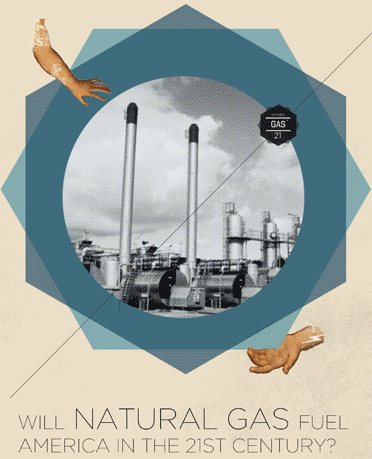Touted by industry as a “clean energy” panacea, unconventional gas is widely heralded as deliverance from air pollution to global warming to foreign energy dependence. It is clean, the drillers say, and there is plenty of it. Descriptions like ‘trillions of cubic feet’ and ‘more than a century’s worth’ are becoming commonplace, used to prop up the vision of a clean, affordable and homegrown unconventional gas future.
But like most things that sound too good to be true, unconventional gas is no exception, as DeSmogBlog pointed out in our own recent report “Fracking the Future.”
Now, continuing to dispel some of the most egregious misconceptions regarding the future of gas, Post Carbon Institute Fellow David Hughes recently released a new report entitled Will Natural Gas Fuel America in the 21st Century?
In his report, Hughes takes on three myths undergirding our gas ambitions: that hydraulic fracturing and horizontal drilling have guaranteed our access to a century’s worth of fuel; that the price of natural gas, which has been historically volatile, will remain low; and that, from a global warming and public health perspective, natural gas is a clean and safe alternative to other fossil fuels.
These assumptions, Hughes writes, are what agencies like the U.S. Energy Information Administration are relying on when it forecasts an increased reliance on shale gas in the coming decades, up to 47 percent of all domestic gas production by 2035. They are also what lies behind President Obama’s recent endorsement of natural gas as “clean” in his “Blueprint for a Secure Energy Future” and the new incentives for transforming America’s vehicle fleet. Other well-regarded environmental organizations like the Worldwatch Institute also joined the gas chorus, suggesting the potential for gas to act as a ‘bridge fuel’ during the transition away from other disastrous energy sources like coal and tar sands oil.
However, the somber lessons of the last decade’s worth of unprecedented drilling across the continent have demonstrated that the ideals behind our burgeoning commitment to gas are unfounded, if not outright nonsensical. If the growing archive of first hand accounts of toxic water and air pollution haven’t made us rethink industry claims, then the steady stream of independent scientific research questioning the fuel’s availability, affordability, safety and cleanliness might do the trick.
Another integral aspect of Hughes’ take-down of the shale gas dream is the impracticable wholesale transition of the nation’s fuel systems to gas. The scope of such a transformation – which would require the dismantling of old energy plants, vehicles, fueling stations and pipeline infrastructure and their subsequent retrofitting or replacement on a nationwide scale – is beyond any realistic economic means, especially with the fragility of the current U.S. economy.
To support such a costly overhaul, domestic gas production would have to increase by over 100 percent, far above even the most optimistic projections. To retrofit one existing vehicle with a natural gas system currently costs approximately $10,000 in the U.S. And while fueling stations across the country could be switched to compressed natural gas (CNG) to supply smaller vehicles, only liquefied natural gas (LNG) is sufficiently dense to supply larger vehicles like long-haul trucks. LNG must be stored at -162 degrees Celsius and so would require a separate fueling infrastructure.
In effect, beyond the troubling aspects of its production via fracking, the very notion that unconventional gas has the capacity to provide the nation with a ‘bridge fuel’ is completely misguided. In the first place, there simply is not enough of the fuel to support such deep dependence.
Secondly, such a switch would also require tremendous amounts of additional resources to carry through, which introduces the additional concern of collateral emissions. And this doesn’t even touch on the equally laborious and resource-intensive replacement of coal-fired power plants.
When considering the costs associated with committing to unconventional gas as an ‘interim’ fuel, it seems an absurdity, especially when the capital required could be directly invested in the production of truly clean renewable energy.
Perhaps some were willing to shrug off the unfortunate environmental impacts of gas drilling to somehow usher in a clean energy future, one that held the promise of domestic energy security. But if we cannot rely upon the viability of gas as a clean, bountiful or secure energy alternative, then we must begin to consider, and invest in truly clean energy.
Hughes puts it well in his conclusion: “when it comes to fossil fuels there is no such thing as a free lunch.”
Subscribe to our newsletter
Stay up to date with DeSmog news and alerts






